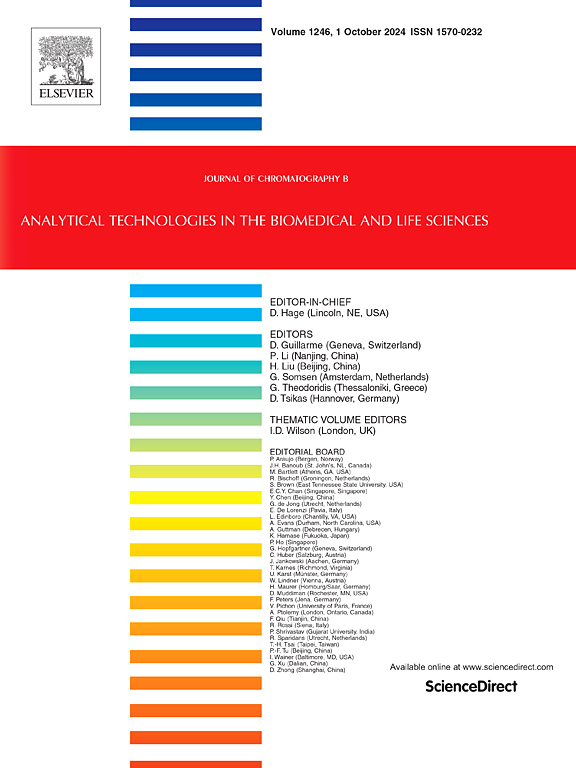Determination of 3-mercaptopropionic acid by HPLC: A sensitive method for environmental applications
Abstract
The organic sulfur compound 3-mercaptopropionic acid (3-MPA) is an important thiol intermediate in organic sulfur metabolism in natural environments. It is generated during degradation of sulfur-containing amino acids (e.g. methionine) and from demethylation of dimethylsulfoniopropionate (DMSP). This pathway is an alternative enzymatic process in the DMSP catabolism that routes sulfur away from the climatically-active dimethyl sulfide (DMS). 3-MPA detection and subsequent quantification in different matrices is difficult due to its extreme reactivity. We therefore developed a sensitive method for determination of 3-MPA based on pre-column derivatization with monobromobimane and analysis by high-performance liquid chromatography (HPLC) with fluorescence detection. This methodology was first tested with 3-MPA standards under low (0.005–0.2 μmol L−1) and high (1–25 μmol L−1) concentrations. For the optimization of the reaction, CHES and, alternatively, Tris–HCl buffers were evaluated in the derivatization step, with Tris–HCl showing more effective separation of thiol derivatives and a better 3-MPA peak shape. The detection limit was 4.3 nmol L−1 with a 10 μL sample injection, and mean recoveries of 3-MPA ranged from 97 to 105% in estuarine waters with different salinities (0.17 and 35.9 ppt). The linearity (r > 0.99) and repeatability of detector response, with intra- and inter-day precision (% CV) of 2.68–7.01% and 4.86–12.5%, respectively, confirmed the reliability of the method. Previous 3-MPA analytical methods required immediate analysis due to unstable derivatives, but in this method we achieved high stability of the derivatized samples when stored at 4 °C, with only a 3–5% loss after more than one year of storage. This method was successfully applied to measure 3-MPA concentrations and rates of 3-MPA production in a variety of intertidal estuarine sediment slurries. Dissolved 3-MPA concentrations in these sediment slurries varied between 2 and 237 μmol L−1 and, 3-MPA net fluxes ranged in wet sediments between −3.6 ± 1.7 and 30 ± 5 μmol L−1 g−1 h−1. Thus, the application of this optimized methodology showed an efficient performance for measuring 3-MPA in environmental samples, with a straightforward sample derivatization and a simple analysis of stable 3-MPA derivatives.





